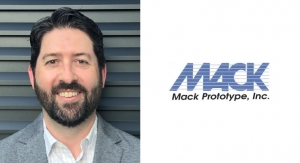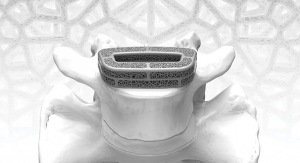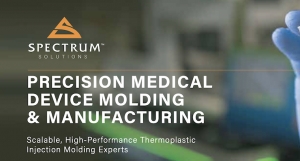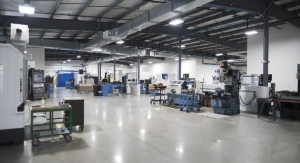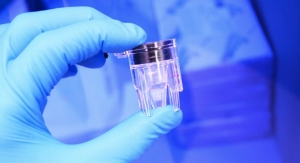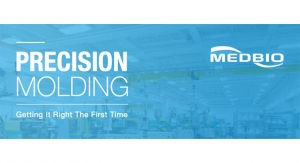Ted Holaska & Alan Wentzell04.11.12
Finding the best partner for outsourced injection molding services is a bit like choosing a hotel for a vacation. The basic offering (a place to sleep and shower) is identical from place to place, but the one that’s ideal for your situation depends on a host of variables. It’s fair to say that there is no one-size-fits-all vendor for outsourced injection molding services.
Selecting a partner for a specific project should occur only after expectations have been identified such as specifications, quantity (both short term and long term) and delivery timetable. After all, if you don’t know what you want, it’s difficult to assess which supplier can meet your needs. (We’ll examine below how a long-term viewpoint can help simplify the selection process.)
A word about price: Price is always an important driver of the final decision. But it should not outweigh many of the other factors that should be evaluated. As with hotels, the lowest-cost option isn’t always the most desirable. Price should be the most important attribute only after you determine that the injection molding partner will meet your long-term needs.
Leading to the discussion about price, here are several important considerations to weigh.
Press Size and Type
A range of press sizes gives you the ability to make small and large parts, some of which require more clamping force than others. Larger presses offer the capacity to produce a lot of smaller parts simultaneously and realize economies of scale. Many contract injection molding shops offer a selection of press sizes to meet the needs of various customers. A partner who has access to a variety of presses can help you quickly scale production up or down to meet market demand without having to search out and qualify a new contract manufacturer. That versatility can save the OEM time and money.
Both hydraulic and electric presses are used throughout the United States. Many injection molding companies offer both. Electric presses are the newer technology. They generally are more precise; their servo-driven motors are electronically indexed to a specified rate of speed, which offers more control than mechanical hydraulic force. Parts that require very tight tolerances could be better suited to electric presses. But for parts that have been running successfully for years on hydraulic presses, there may be no reason to select anything else. You need to confer closely with your partner to determine which type of press is ideal for each job.
Sometimes you don’t know the best press size or press type for a part. In those cases, it’s critical to work with an injection molding partner that has a broad range of experience and capabilities. There are many types of mold designs—two-plate, three-plate, stripper plate, cam action, hot runner tools, cool runner tools —and a variety of gating methods. A vendor with extensive capabilities will be in the position to counsel the OEM on the most cost-effective processes to meet specifications and budget.
Clean Room Environment
Is a clean room necessary for injection molding? It depends. Clean rooms use air filters, engineered air flow and protective gear to provide a cleaner production environment. They reduce the risk of contamination from a host of sources: hair, skin, dirt, paper fibers or other particulates. A clean room environment helps ensure that particles that don’t belong in the molded part are kept out of it. A Class 8 clean room offers a cleaner, filtered air environment with control over airborne pollutants such as viable and nonviable particulates as compared to general room air. Given the increasing scrutiny of the U.S. Food and Drug Administration and other regulating bodies, many OEMs are opting for injection molding to happen in a clean room as an additional safeguard. It’s not mandatory and for many parts it’s not necessary. But it is helpful to have it as an option should the project team deem it important.
In-House Tool Design & Mold Shop
The quality of a final injection molded part is influenced by the quality of the tool build as well as the partner’s ability to use the tool on its equipment. And tool quality is a function of how well it has been maintained over time. An integrated tool and mold shop can provide many services. It can inspect the mold and compare it to the original prints and designed state. It can review repair histories on the tool and look at any past quality issues to see if minor improvements can be made. They also will be familiar with the idiosyncrasies of the company’s presses and adjust the processes accordingly.
It’s also helpful in repair situations. If it’s a minor issue, an in-house person can come out to the press and make minor adjustments while the tool sits in the press. Or it can be removed and repaired quickly. They hold spare parts and componentry in the shop so they can turn it around quickly and restart production. It’s like having a mechanic driving in a car with you in case of a breakdown.
Even before the tool is on the press, an in-house design team can work with process engineers to find ways to reduce cycle time, limit material consumption, run cleaner or improve reproducibility across multiple cavities. The team even can design molds that are maintenance-friendly with replaceable inserts or cores in high-wear areas to simplify replacement and upkeep.
Overall, having vast tool expertise on site can save time over sending the tool to external resources. The OEM will need to determine what’s more cost-effective and meets the timeline requirements of the project.
Material Expertise
A deep knowledge of raw materials for injection molding can be helpful in many instances. For example, using a textured mold finish with some materials will cause the part to stick to the mold; a polished finish would be better. With other materials, a polished finish might stick to the mold. Someone with injection molding and material knowledge can eliminate guesswork and streamline production. Similarly, knowing how the component will connect or bond to another component during production or in the field will influence material selection.
From an engineering standpoint, you also need to know about performance characteristics like chemical resistance, strength, flexibility or rigidity. From a production standpoint, they all have different flow rates that determine how hard (or easy) they inject into the mold. They run at different temperatures. There are material shrinkages for which tool designers need to compensate.
Additionally, some of the molding materials (like thermoplastics) will cause mold steels to corrode, so the tool might need to be fabricated from stainless steel as opposed to standard tool steel. It’s also necessary to consider the metal that forms the mold’s cooling channels. If they corrode and lose their cooling capacity, cycles will slow down or the part might not be formed correctly.
Simply put, a knowledgeable team of materials specialists can be a useful asset over the life cycle of the injection molded part.
Additional Expertise
It’s often helpful to ask early in discussions whether your potential vendors have additional capabilities related to the production of medical devices. For example, can they provide assembly, packaging, labeling or sterilization services? Do they provide the services in-house or through outsourcing partners? Companies that simply are looking for a molded part might not need the additional capabilities. But having those capabilities available can provide flexibility and convenience if you’re faced with capacity constraints. Additionally, injection molding partners with vertically integrated services often have a fuller understanding of final product requirements; they can contribute that design for manufacturing knowledge to the mold building and production teams.
Communication
Some of the most important work in injection molding outsourcing happens outside of the production floor and tool shop. Many of the decisions regarding materials, maintenance and production methods depend on information that is shared in the very early stages of the project. Ultra-modern equipment and expensive technology will not overcome communication deficiencies or breakdowns. Each party needs to enter the relationship with an abundance of questions and few assumptions. Both short-term and long-term expectations need to be shared from the outset to develop an approach that will stand the test of time.
Ted Holaska is director, Plastics Processing Business Unit, for B. Braun Medical Inc. A 17-year industry veteran, he manages the daily operations of B. Braun's 16,200-square-foot, ISO Class 8 injection molding facility as well as the company's mold shop operations that include maintenance, repair, component fabrication and prototyping. Alan Wentzell is manager of Injection Mold Design at B. Braun Medical. Wentzell brings more than three decades of medical device injection molding experience to designing and using injection molds on a variety of presses for a litany of end-uses. His experience proves invaluable in developing mold designs to optimize press performance, product quality and material usage.
Selecting a partner for a specific project should occur only after expectations have been identified such as specifications, quantity (both short term and long term) and delivery timetable. After all, if you don’t know what you want, it’s difficult to assess which supplier can meet your needs. (We’ll examine below how a long-term viewpoint can help simplify the selection process.)
A word about price: Price is always an important driver of the final decision. But it should not outweigh many of the other factors that should be evaluated. As with hotels, the lowest-cost option isn’t always the most desirable. Price should be the most important attribute only after you determine that the injection molding partner will meet your long-term needs.
Leading to the discussion about price, here are several important considerations to weigh.
Press Size and Type
A range of press sizes gives you the ability to make small and large parts, some of which require more clamping force than others. Larger presses offer the capacity to produce a lot of smaller parts simultaneously and realize economies of scale. Many contract injection molding shops offer a selection of press sizes to meet the needs of various customers. A partner who has access to a variety of presses can help you quickly scale production up or down to meet market demand without having to search out and qualify a new contract manufacturer. That versatility can save the OEM time and money.
Both hydraulic and electric presses are used throughout the United States. Many injection molding companies offer both. Electric presses are the newer technology. They generally are more precise; their servo-driven motors are electronically indexed to a specified rate of speed, which offers more control than mechanical hydraulic force. Parts that require very tight tolerances could be better suited to electric presses. But for parts that have been running successfully for years on hydraulic presses, there may be no reason to select anything else. You need to confer closely with your partner to determine which type of press is ideal for each job.
Sometimes you don’t know the best press size or press type for a part. In those cases, it’s critical to work with an injection molding partner that has a broad range of experience and capabilities. There are many types of mold designs—two-plate, three-plate, stripper plate, cam action, hot runner tools, cool runner tools —and a variety of gating methods. A vendor with extensive capabilities will be in the position to counsel the OEM on the most cost-effective processes to meet specifications and budget.
Clean Room Environment
Is a clean room necessary for injection molding? It depends. Clean rooms use air filters, engineered air flow and protective gear to provide a cleaner production environment. They reduce the risk of contamination from a host of sources: hair, skin, dirt, paper fibers or other particulates. A clean room environment helps ensure that particles that don’t belong in the molded part are kept out of it. A Class 8 clean room offers a cleaner, filtered air environment with control over airborne pollutants such as viable and nonviable particulates as compared to general room air. Given the increasing scrutiny of the U.S. Food and Drug Administration and other regulating bodies, many OEMs are opting for injection molding to happen in a clean room as an additional safeguard. It’s not mandatory and for many parts it’s not necessary. But it is helpful to have it as an option should the project team deem it important.
In-House Tool Design & Mold Shop
The quality of a final injection molded part is influenced by the quality of the tool build as well as the partner’s ability to use the tool on its equipment. And tool quality is a function of how well it has been maintained over time. An integrated tool and mold shop can provide many services. It can inspect the mold and compare it to the original prints and designed state. It can review repair histories on the tool and look at any past quality issues to see if minor improvements can be made. They also will be familiar with the idiosyncrasies of the company’s presses and adjust the processes accordingly.
 Photo courtesy of B. Braun Medical Inc. |
Even before the tool is on the press, an in-house design team can work with process engineers to find ways to reduce cycle time, limit material consumption, run cleaner or improve reproducibility across multiple cavities. The team even can design molds that are maintenance-friendly with replaceable inserts or cores in high-wear areas to simplify replacement and upkeep.
Overall, having vast tool expertise on site can save time over sending the tool to external resources. The OEM will need to determine what’s more cost-effective and meets the timeline requirements of the project.
Material Expertise
A deep knowledge of raw materials for injection molding can be helpful in many instances. For example, using a textured mold finish with some materials will cause the part to stick to the mold; a polished finish would be better. With other materials, a polished finish might stick to the mold. Someone with injection molding and material knowledge can eliminate guesswork and streamline production. Similarly, knowing how the component will connect or bond to another component during production or in the field will influence material selection.
From an engineering standpoint, you also need to know about performance characteristics like chemical resistance, strength, flexibility or rigidity. From a production standpoint, they all have different flow rates that determine how hard (or easy) they inject into the mold. They run at different temperatures. There are material shrinkages for which tool designers need to compensate.
Additionally, some of the molding materials (like thermoplastics) will cause mold steels to corrode, so the tool might need to be fabricated from stainless steel as opposed to standard tool steel. It’s also necessary to consider the metal that forms the mold’s cooling channels. If they corrode and lose their cooling capacity, cycles will slow down or the part might not be formed correctly.
Simply put, a knowledgeable team of materials specialists can be a useful asset over the life cycle of the injection molded part.
Additional Expertise
It’s often helpful to ask early in discussions whether your potential vendors have additional capabilities related to the production of medical devices. For example, can they provide assembly, packaging, labeling or sterilization services? Do they provide the services in-house or through outsourcing partners? Companies that simply are looking for a molded part might not need the additional capabilities. But having those capabilities available can provide flexibility and convenience if you’re faced with capacity constraints. Additionally, injection molding partners with vertically integrated services often have a fuller understanding of final product requirements; they can contribute that design for manufacturing knowledge to the mold building and production teams.
Communication
Some of the most important work in injection molding outsourcing happens outside of the production floor and tool shop. Many of the decisions regarding materials, maintenance and production methods depend on information that is shared in the very early stages of the project. Ultra-modern equipment and expensive technology will not overcome communication deficiencies or breakdowns. Each party needs to enter the relationship with an abundance of questions and few assumptions. Both short-term and long-term expectations need to be shared from the outset to develop an approach that will stand the test of time.
Ted Holaska is director, Plastics Processing Business Unit, for B. Braun Medical Inc. A 17-year industry veteran, he manages the daily operations of B. Braun's 16,200-square-foot, ISO Class 8 injection molding facility as well as the company's mold shop operations that include maintenance, repair, component fabrication and prototyping. Alan Wentzell is manager of Injection Mold Design at B. Braun Medical. Wentzell brings more than three decades of medical device injection molding experience to designing and using injection molds on a variety of presses for a litany of end-uses. His experience proves invaluable in developing mold designs to optimize press performance, product quality and material usage.







